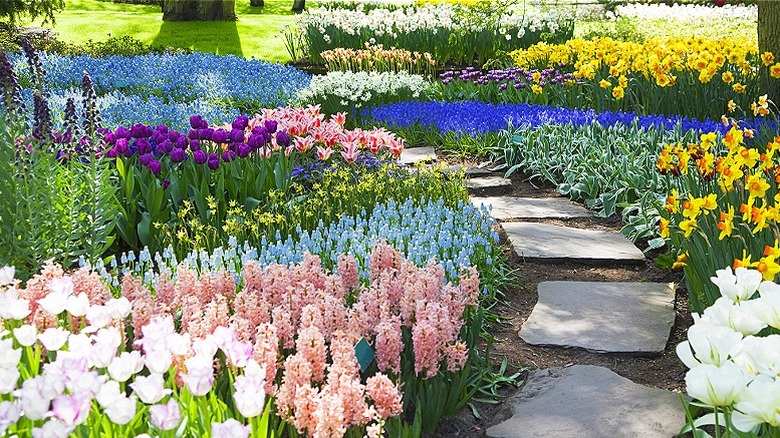Spring brings a vibrant burst of color and life to gardens, and one of the best ways to kick off the season right is to plant flower bulbs in the fall. Among the most popular bulbs are alliums, hyacinths, narcissi, and crocuses, each with its unique charm and allure. But have you ever wondered if you could mix these bulbs together? The answer is yes; in fact, mixing bulbs is a gardening trend that’s gaining momentum, and for good reason.
The allure of spring bulbs lies in their ability to transform a garden into a kaleidoscope of colors. Alliums, with their spherical clusters of tiny florets, provide a whimsical touch, while hyacinth flowers offer a sweet, earthy fragrance. Narcissi, tulips, and crocuses, meanwhile, bring in a riot of hues. As a result, mixing these bulbs can create a harmonious symphony of colors, shapes, and scents in your garden that’s both captivating and visually appealing.
Benefits of mixing bulbs in a garden

Mixing bulbs in your garden offers several benefits that go beyond aesthetics. For one, it extends the blooming period. By carefully selecting early, mid-, and late-spring flowering varieties, you can enjoy a continuous display of color throughout the season. Also, different bulb flowers, such as crocuses, snowdrops, and daffodils, attract various pollinators, from bees to butterflies, and help foster a healthier ecosystem. Additionally, combining bulb plants can deter certain pests, as some varieties like hyacinth, narcissi, and daffodils, repel animals like squirrels, rabbits, and deer, protecting your garden from potential damage.
When mixing bulbs in a garden, it’s essential to consider factors such as height, color, and blooming times. Taller bulbs like alliums should ideally be placed toward the back, while shorter ones like crocuses can be placed in front to ensure all flowers get adequate sunlight. To create a natural look, toss bulbs into your yard and then plant them wherever they land. Plant bulbs at the appropriate depth (about three times their diameter) in well-draining soil and provide regular watering and mulching to help maintain soil moisture and keep the bulbs healthy.


